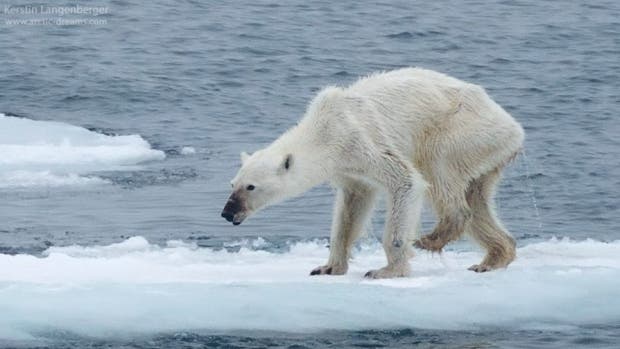Polar bears are forced to undertake more marathon, life-threatening swims to find food, due to the melting ice caused by rising global temperatures.

Life isn’t easy in the Arctic – in fact, it’s anything but. Polar bears, some of the most iconic creatures in the world regularly walk and swim great distances to find food, which is scarce in the frozen wastelands. Now, a new study published in the journal Ecography found that polar bears go to greater and greater lengths to secure the food they need. In 2012, around 70% bears swam at least 49 km, showing 25% rise in the number of bears who covered miles in 2004. A remarkable case was recorded in 2009. A female bear was recorded swimming over 400km in the time period of nine days. During the journey, her cub lost his life but she managed to survive as she discovered an ice flow sufficiently huge to hold her weight in what has been becoming a highly common phenomenon.
While speaking to Radio Canada International, Canadian biologist Andrew Derocher, one of the authors of the study said:
“Some of our Alaskan colleagues had seen some very unusual swimming events in polar bears that they were following. They had one bear that swam almost 700km, and during that swim she lost her cub and she lost over 20% of her body weight”.
This is a growing trend among all polar bear populations, and it’s extremely worrying. Polar bears are very good swimmers, but the open ocean isn’t their preferred habitat. They prefer to stay on the ice and venture hunting from time to time. This is even more dangerous for young cubs, who are much more inexperienced and much more prone to hypothermia and fatigue. The same risks apply for older or injured bears. The fact that more and more bears are starting to exhibit this unnatural behavior is startling. That this is happening so fast is a major alarm sign.
The problem is clear – there is a lack of ice. Temperatures are rising and ice is naturally melting. This means that polar bears have to swim more and the weaker specimens will not survive. For thousands of years, the polar bear has been a key figure in the material, spiritual, and cultural life of circumpolar peoples, but their habitat is continuously shrinking and they are under more and more stress. At the moment, it is not clear if the populations will be able to adapt, or if future generations will only see polar bears on postcards and in Coca-Cola commercials.
Journal Reference: Migratory response of polar bears to sea ice loss: to swim or not to swim.






